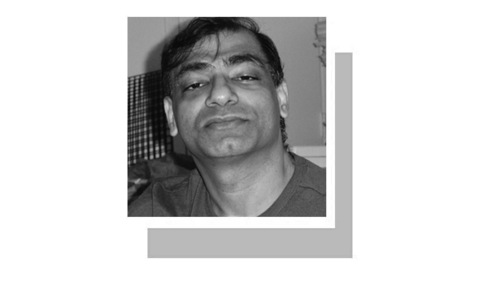Today gingerbread is associated with Christmas but it wasn’t always this way. Gingerbread refers to any baked treat featuring ginger, cinnamon, nutmeg, cloves and sweetened with honey, brown sugar or molasses. But it initially referred to preserved ginger (the word is derived from the Latin word, zingiber).
Gingerbread and Western history intersect in the oddest of ways: the court of Queen Elizabeth I reportedly served gingerbread men cookies to foreign dignitaries. Mediaeval Europeans held gingerbread-themed festivals. Ladies would gift knights a gingerbread treat or ate a gingerbread ‘husband’ for good luck — and in the hopes of landing someone special! Gingerbread also found its way to Shakespeare: In Love’s Labour Lost, a character says: “An I had but one penny in the world, thou shouldst have it to buy ginger bread.”
The love for gingerbread soon spread across the Atlantic — Americans have been baking gingerbread for the last 200 years. One of the oldest recipes for the baked treat is even attributed to the mother of George Washington, the first US president.
In Germany, heart-shaped gingerbread cookies called Lebkuchen can be traced back to the 13th century. Lebkuchenherzen, the heart-shaped version of the cookies, which feature obscene or affectionate messages such as “All I need is you” written in icing sugar, are a fixture in markets and festivals in Germany. The country is also the most likely birthplace of the gingerbread house or the ‘witch’s house’ made popular by the fairy tale Hansel and Gretel.
There’s nothing more Christmas-y or wintry than gingerbread
It’s surprising that gingerbread or something similar to it hasn’t sprung up in Asia, considering that the spices used in the concoction and ginger are indigenous to the region. Ginger, the star ingredient, was first grown in South East Asia about 5,000 years ago, before spreading to the surrounding regions including India; Europe was introduced to ginger exported from India much later — by Arab traders around the first millennium.
While ginger is a staple ingredient in savoury dishes and is valued for its medicinal qualities, it isn’t as prominently featured in sweet concoctions in the region. Ginger’s health benefits have been known for centuries — the first written record of ginger is from a book of Confucius, sayings (written between 475-221 BC) in which it is mentioned that the legendary philosopher ate a piece of ginger with each meal.
Ginger is used in both Ayuverdic and Chinese traditional medicine and ginger candy is known to stave off nausea. While modern medicine is sceptical of ginger’s health benefits, it can’t hurt to add a little ginger to your life.
Gingerbread Cake Loaf
There’s nothing more Christmas-y or wintry than gingerbread and it makes a nice, not-too-sweet addition to afternoon tea. When one thinks of gingerbread, the first thing that usually pops into people’s minds is a gingerbread house or gingerbread men cookies — the most popular iteration of the dessert. However, I find a gingerbread cake loaf far more fun to make and — to boot — it’s less time consuming!
The best thing about this cake is that it stays fresh for at least a week — simply cover the cooled loaf in Saran/plastic wrap or place in an air-tight container. Can’t find molasses? Replace it with honey (the darker the honey, the better it is).

Ingredients
For the gingerbread
2 cups all-purpose flour
1 teaspoon baking powder
2 tablespoons ground ginger
1 teaspoon ground cinnamon
1 teaspoon ground nutmeg (jaifal)
1 teaspoon ground clove
½ teaspoon salt
½ cup brown sugar
½ cup butter (softened at room temperature)
½ cup molasses
1 teaspoon vanilla essence
2 eggs
1 cup buttermilk (recipe given below)
1-2 tablespoons icing sugar for dusting (optional)
1-2 teaspoon of crystallized ginger (optional)
For the buttermilk
1 tablespoon vinegar 1 cup milk
Method
Preheat oven to 200°C.
In a bowl, mix all the dry ingredients together: stir the flour, the ground nutmeg, cinnamon and baking powder and set aside.
Make the buttermilk: add a tablespoon of vinegar to the bottom of a cup or a bowl. Pour in the milk, stir and set aside for five minutes.
In a separate bowl, whisk together the sugar and butter. Add the molasses and the vanilla essence. Beat the eggs in a separate bowl and add to the sugar-butter mixture. Mix well.
Add a quarter of the dry ingredients followed by some of the buttermilk. Fold into the sugar-butter mixture. Keep on adding both the milk and the mixture alternately and stir.
Line a 9x5 inch baking loaf pan with waxing paper or grease with butter and dust with flour. Sprinkle crystallised ginger on the top if desired.
Bake for 40-45 minutes at 200°C or until done.
Let the cake cool before dusting with icing sugar.
Serve with masala chai.
Published in Dawn, EOS, December 18th, 2022















































Dear visitor, the comments section is undergoing an overhaul and will return soon.